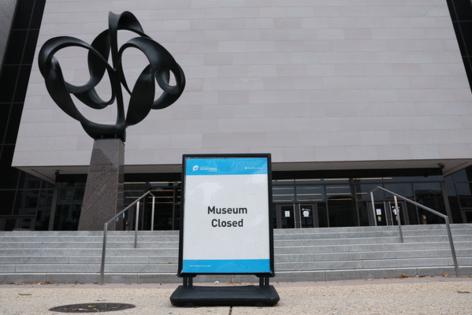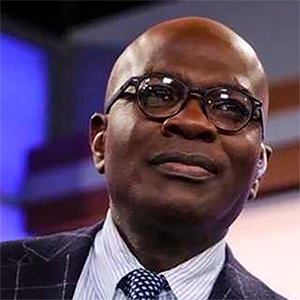Matthew Yglesias: What makes this shutdown so different
Published in Op Eds
During the 2013 government shutdown I happened to be in Philadelphia, and I was surprised to find that the Liberty Bell — which sits in its own little room with big windows — was “closed.” You could stand there and look at it, but only through tourist-smudged glass.
This time around, the Liberty Bell Center and other buildings that are part of Independence National Historical Park are closed again. But the National Park Service makes a point of saying that they “remain as accessible as possible,” while Philadelphia’s tourism bureau helpfully notes that “the Liberty Bell can still be viewed through a window on the east side of its building.”
It’s a small but telling difference between this shutdown and previous ones. In the past, the public has blamed the shutdown on the opposition party in Congress. And the president, who has operational command of the executive branch, responds by making the shutdown as visible and painful as possible. Voters are already blaming the opposition for the standoff, the theory goes, so why not maximize their annoyance and pressure it to fold.
This shutdown has a different dynamic. The public is displeased with both sides’ behavior, but on balance tends to put slightly more blame on Republicans than Democrats. That means President Donald Trump has strong incentives to minimize the visible pain of the shutdown. Look how close you can get to the Liberty Bell!
More consequentially, Trump isn’t letting a lack of authorized funds stop him from paying the troops or even maintaining the WIC program for pregnant women and young children. The legality of these moves is questionable. The White House is essentially daring Democrats to sue, in which case they would be responsible for the lack of military pay. But Democrats aren’t taking the bait — they will grumble that Trump is failing to fully comply with the Antideficiency Act, but they don’t intend to do very much about it.
In part, of course, that’s because Trump is doing plenty of other questionably legal things.
Office of Management and Budget Director Russell Vought claims that the shutdown empowers him to do large-scale layoffs of federal civilian workers, a claim that both Democrats and a federal judge dispute. Trump also purports to have the power to do things like cancel federal funding for the Gateway project connecting New Jersey to New York City as a means of punishing Democrats.
Again, leaving aside the dubious legality of all this, politically this is not the usual form of pressure found in shutdown playbook. The senators Trump is hitting by cutting funding to blue states are not the vulnerable frontliners who might be coerced into caving. They’re safe-seat Democrats whose constituents would rebel if they backed down. Trump, as is often the case, is more interested in punishing his foes than in winning an argument.
In fact, in concrete political terms these retaliation efforts are only making it easier for Democrats to hold out. In advance of the shutdown, many Democrats expressed concern to me that holding a hard line against Trump would make life more difficult for their party’s gubernatorial candidates in New Jersey and Virginia. Instead, by attacking the Gateway project and lashing out against federal workers, Trump has given Mikie Sherrill and Abigail Spanberger talking points for the campaign’s final stretch: Their opponents, they say, are strong Trump allies and therefore fundamentally opposed to their respective states. The pitch may not work out, but as far as Democrats can tell these arguments are helping them.
Of course none of this means that Democrats will get what they want out of this fight. Trump’s approval rating, though bad, is better than it was eight years ago. Democrats’ generic ballot polling, though it shows them ahead, is worse than it was eight years ago. Democrats have a strong Senate pickup opportunity in North Carolina, but the incumbent there is retiring and under no particular pressure to cave. They have another decent shot in Maine, but the Republican majority in the Senate is large enough that they can let Susan Collins act independently and still hold its ground as a caucus.
Democrats’ fundamental strategic dilemma is that to meaningfully pressure the GOP, they need to put states like Ohio, Texas, Iowa, Kansas and Alaska in play. So far, there’s little sign that’s happening.
What’s more, even though Democrats often argued that the appropriations lapse could be used as a form of “leverage” against Trump, there is very little actual leverage here. Trump is not really sweating the lack of appropriations. ICE raids and deportations continue. Troops are still getting paid. He can still abuse prosecutorial power to persecute his political enemies.
Meanwhile, the stock market continues to bounce up and down between AI optimism and tariff anxiety, neither of which is affected by the appropriations lapse. And Trump’s abuses of power make Democrats less inclined than ever to strike a deal on some narrow basis.
For now, there simply isn’t meaningful pressure on either the White House or Senate Democrats to cave. The result is a standoff that, unless Republicans choose to resolve it on their own, could persist for a long, long time.
____
This column reflects the personal views of the author and does not necessarily reflect the opinion of the editorial board or Bloomberg LP and its owners.
Matthew Yglesias is a columnist for Bloomberg Opinion. A co-founder of and former columnist for Vox, he writes the Slow Boring blog and newsletter. He is author of “One Billion Americans.”
©2025 Bloomberg L.P. Visit bloomberg.com/opinion. Distributed by Tribune Content Agency, LLC.
























































Comments